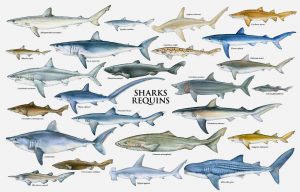Do you know why sharks are so cool? Here’s some of interesting reasons about this mysterious creature. Sharks are feared by many people but, they are the most iconic group living in the ocean. The owners of Edmonton Roofing love checking out various species of sharks in their travels across the globe. There are many species of sharks which are still unidentified. Here are some interesting facts about sharks.

- Wonderful species of sharks:
There are more than 400 species of sharks. They come in a variety of sizes, shapes and even colors. The largest shark living in the ocean is known as the whale shark. It is said that this shark has a length of approximate 59 feet. On the other hand, the smallest shark is known to have a length of 5 – 6 inches. This smallest shark is known as lantern shark.
- Sharks sleep differently than other fishes:
Another interesting fact about sharks is that they have a different sleeping patterns. This is because, sharks need to keep water moving to receive oxygen. So, when they sleep, they seem to be sleep swimming. During their sleep, their brain is less active but they swim during the sleep. It is different from many other fishes who go under deep water to sleep.
- Egg laying habits:
As there are a lot of species of sharks, so they have different egg laying habits. Some sharks lay eggs while there are many sharks who give birth to their babies. Babies which are hatched from the egg gets their nutrition through the capsule which is filled with yolk.
- The laziest shark:
Nurse sharks are known as the laziest sharks. In cold months, these species of sharks don’t move at all. In addition to that, they have a limited diet as they are not active in hunting. Unlike other sharks, these sharks don’t need to move in order to fulfill the oxygen necessity.
- Long lived species:
The age of sharks is still a mystery but it is said that the whale shark can easily live up to 100 – 150 years. On the other hand, smaller sharks can survive up to 20 – 30 years.
